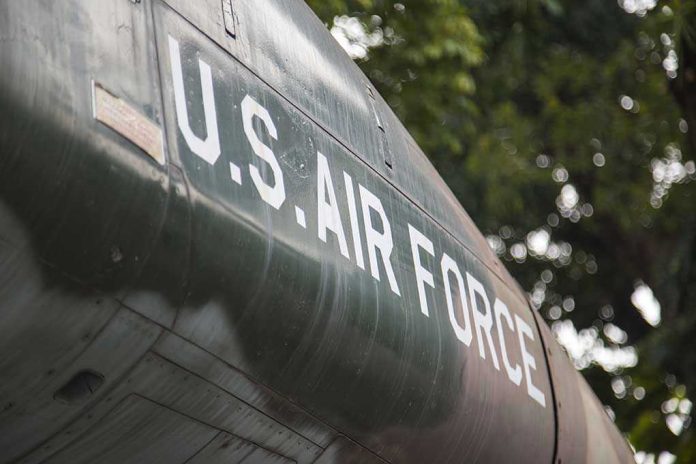
In a major concern for national security, U.S. airbases in the Western Pacific are increasingly vulnerable to Chinese missile and drone attacks, necessitating urgent innovation in combat aircraft operations.
Story Highlights
- U.S. airbases in the Western Pacific face critical vulnerabilities from Chinese missile and drone threats.
- The Department of Defense is exploring alternative basing concepts to mitigate risks.
- Technological advancements in long-range and VTOL aircraft are essential to maintaining airpower.
- An ongoing debate over investment priorities: base hardening versus alternative basing solutions.
Strategic Vulnerabilities in the Western Pacific
The U.S. airpower strategy in the Pacific has long relied on fixed bases in Japan and Guam. However, with China’s expansion of its missile and drone capabilities, these bases are now seen as “ruinously” vulnerable. The People’s Liberation Army (PLA) has enhanced its missile arsenal, rendering traditional airbases susceptible to early neutralization during a conflict. This vulnerability underscores a pressing need for the U.S. to rethink its operational strategies.
To combat these threats, the Pentagon is considering innovative solutions, including dispersed operations and mobile launch platforms. The goal is to ensure that combat aircraft can operate effectively without relying on fixed, exposed bases. This approach not only mitigates vulnerability but also provides the U.S. with greater strategic flexibility in the region.
Technological and Operational Innovations
To address the threat, defense analysts advocate for the development of long-range aircraft with vertical takeoff and landing (VTOL) capabilities. These technologies would allow aircraft to operate from roads, austere fields, or naval vessels, bypassing the need for conventional runways. Such innovations are crucial for maintaining air superiority in contested environments.
Think tanks like the Hudson Institute and RAND Corporation have highlighted the urgency of investing in these new technologies. Their reports emphasize that failure to adapt could significantly undermine U.S. deterrence efforts and operational effectiveness in the Pacific. This shift in strategy also mandates increased defense spending to support the development and deployment of these advanced aircraft.
Policy Debate and Investment Priorities
The debate over U.S. defense priorities is intensifying. While some policymakers argue for increased investment in hardening existing bases, others advocate for a focus on alternative basing concepts and new aircraft technologies. This decision holds significant implications for U.S. military strategy and fiscal policy.
The need for a balanced approach is evident, as both strategies offer merits in enhancing national security. Ultimately, this issue highlights the broader challenges of maintaining U.S. military readiness in an increasingly complex global security environment.
Sources:
Lack of Hardened Aircraft Shelters Leaves U.S. Airbases Vulnerable to China, New Report Warns
Cratering Effects: Chinese Missile Threats to US Air Bases in the Indo-Pacific
Pentagon Reviewing Base Defense as Experts Warn of Pacific Threats
Concrete Sky: Air Base Hardening in the Western Pacific














